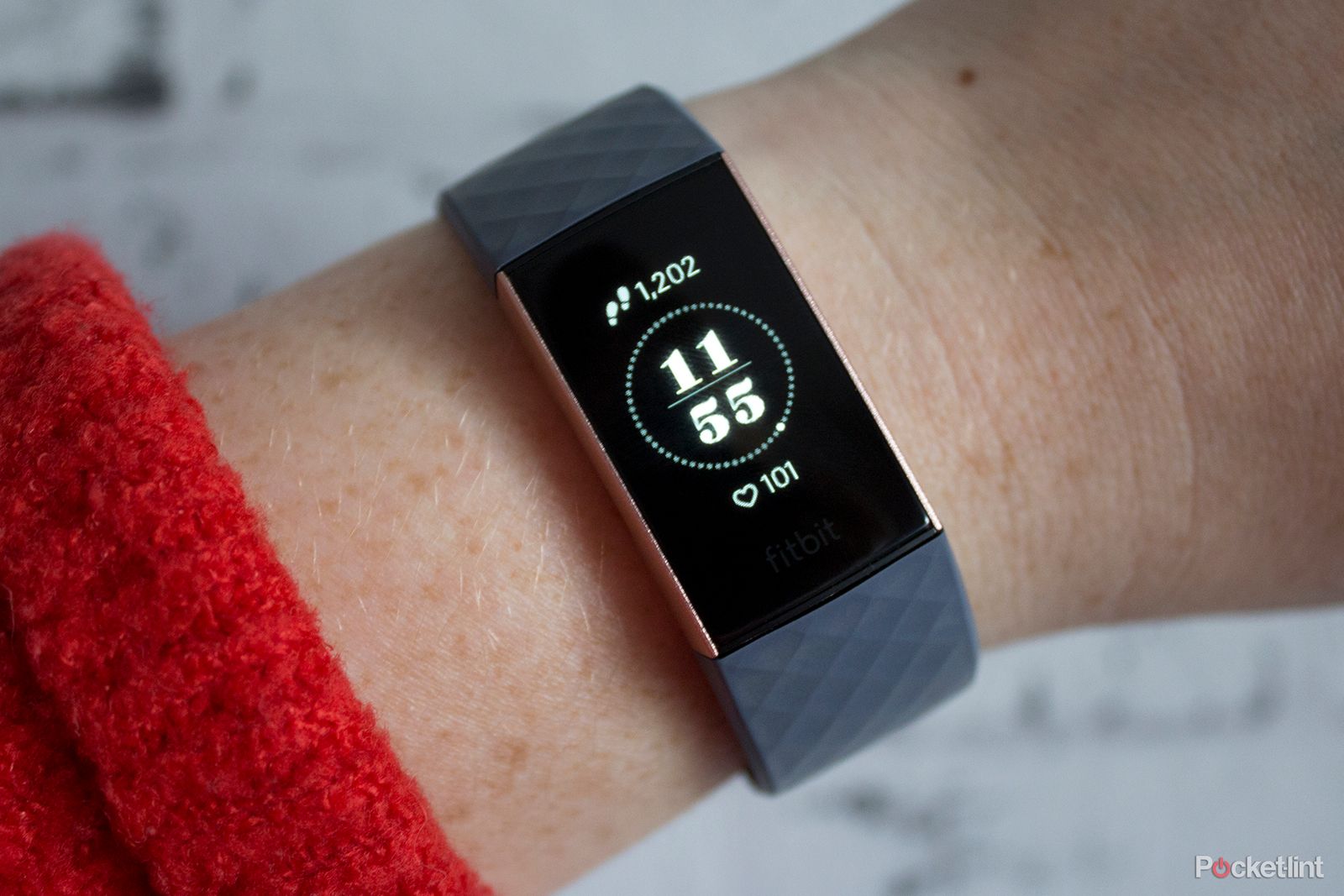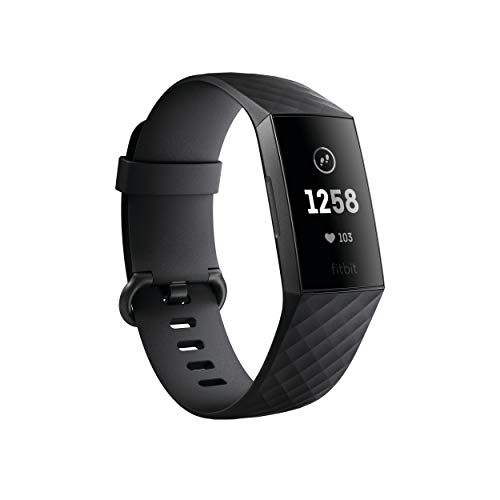Fitbit is a well-known company in the fitness tracker market. It's been around for over a decade and it is said to be accountable for over 80 per cent of the UK's market. That's a pretty big market share, with products like the Charge putting in a strong performance.
The Charge 3 is a fitness tracker which joins Fitbit's eight-strong line-up of devices to succeed the popular Charge 2. The newest model is Fitbit's most advanced fitness tracker to date, bringing with it a new design and a host of new features, including some from the company's Versa and Ionic smartwatches.
But with smartwatches like the Apple Watch S4 placing a bigger focus on fitness features on top of their extra functionality, is there still a place for a tracker like the Fitbit Charge 3?
Our quick take
The Fitbit Charge 3 is a fantastic evolution for the Charge family. It's the fitness tracker we didn't even realise we wanted until we started to wear it.
The design is far more sophisticated than its predecessors, offering a premium and modern feel that is lightweight, comfortable and packed full of features. The addition of water resistance is fantastic, activity and sleep tracking is accurate, smartphone notifications are great, and the Fitbit platform is still one of the best and most user-friendly out there.
However, we'd like to have seen the SpO2 functionality working, and there's still no in-built GPS (or NFC in the standard model – that's Special Edition only). That said, we're aware that's a lot to ask for the £130 price tag.
Some might say that fitness trackers are reaching the end of their life, especially with smartwatches offering more and more fitness features. But for now, we think there is still a place for both, especially in the case of devices as good as the Charge 3. Smartwatches aren't for everyone, and they certainly can't compete with a week-long battery life.

Fitbit Charge 3 - 4.5 / 5
| FOR | AGAINST |
|---|---|
|
|
Design and display
- Aluminium body, 20% lighter than Charge 2
- Rose gold and gunmetal grey body options
- OLED touchscreen display
- Water-resistant to 50m
If you'd asked us a couple of months ago what we thought of the Fitbit Charge 2's design, we would have said we still loved it. It's solid, practical and it looks great, while also being comfortable to wear. But then we started wearing the Charge 3.
The Charge 3 is a classic case of 'you don't know what you want until you get it'. The new tracker is an evolution of the Charge 2, sharing design similarities including interchangeable straps, a heart-rate monitor, a buckle fastening, and that solid body with an OLED display – but everything is sleeker and more sophisticated.
The latest device is 20 per cent lighter than its predecessor, opting for an aluminium body rather than stainless steel – and the difference is really noticeable on the wrist. It's much more comfortable, which is saying something given the Charge 2 is an easy-to-wear device. The edges of the Charge 3 are smoother too, the underside is curvier, and the display is brighter. Everything is just, well, that much better.
Fitbit has traded the button on the left-hand side of the Charge 2 for an inductive button on the Charge 3. This responds with a small vibration when tapped, turning the display on/off or taking you back to the previous screen when in various menus.
The mechanism for changing the straps is much sleeker in terms of both looks and mechanics too. Rather than the chunky stainless clips you'll find on not only the Charge 2 but the Alta and Alta HR, the Charge 3 has a neat and tidy small button that requires just a small press before the strap is ejected.
The Charge 3's display is 40 per cent larger than that of the Charge 2. In the newer device it's no longer just a tap display either: there's full touchscreen control which, while not as responsive as the Ionic or Versa smartwatches, still offers a fluid experience. This new interface functionality allows you to swipe through all the metrics you'd find in the app, including sleep data, female health and hydration.
The Charge 3's display is sharp and crisp and it performs well in bright outdoor conditions too. It's not colour, though, but Fitbit has added a greyscale for more detail than a binary black-and-white display. It offers greater depth than standard white text and allows for more important information, such as the time on the main watch face, while steps and heart-rate metrics, for example, are more subtle in their grey tones.
The Charge 3 is also water resistant up to 50 metres. It is taking everything we have not to fill the rest of this review with whoops because water-resistance on Fitbit's trackers has been a long time coming. Yes, the Flex 2 offers it, but for those who want a device with a display and swim tracking, Fitbit only offered the Versa and Ionic smartwatches, both of which are quite a bit larger and more expensive than the likes of the Charge.
There are two finishes for the standard Charge 3: a rose gold body with a purply blue strap (our review device); and a gunmetal grey body with a black strap. There are also two Special Edition models with the same body options, but the rose gold has a purple woven strap, while the gunmetal grey body has a white perforated sports strap. As you'd expect, there are also a range of extra straps available to buy – including two leather options.
Features
- Swim tracking, heart-rate, auto exercise recognition
- Smart notifications, Quick Replies, timer, weather
- Fitbit Pay (Special Edition models only)
Naturally, as the Fitbit Charge 3 is water-resistant, it will come as no surprise to most that it also offers swim tracking. The Charge 3 only displays swim duration on its screen during the exercise, but the Fitbit app details laps, distance, pace and calories – similar to what the Ionic and Versa already offer (though these will show laps on their displays during the exercise).
Additionally, the Fitbit Charge 3 comes with all the features found on the Charge 2, including the PurePulse continuous heart-rate monitoring, multi-sport tracking, cardio fitness level, guided breathing sessions, and automatic sleep tracking and sleep stages. There is also automatic exercise recognition and reminders to move, along with all-day activity tracking and connected GPS.
The eagle-eyed among you will have noticed the Charge 3 doesn't introduce built-in GPS, a feature we had hoped for, but it does introduce a feature called Goal-Based Exercise. This feature allows users to personalise more than 15 exercise modes with their own goal of calories burned, duration or distance. For example, it's possible to start a run on the Charge 3 and set the goal at 300 calories. Once you achieve the 300 calories burned you'll see a celebratory screen. Whoop.
Fitbit has also added Run Detect with auto stop and there are smartphone notifications too. Like the Charge 2, the 3 offers call, text and calendar alerts, along with various third-party apps like Facebook and Instagram, phone calls and Quick Replies (if you're an Android user).
In terms of other smart features, the Charge 3 offers alarms, adding a timer, weather information, calendar information and the ability to see the Fitbit Leaderboard directly on your wrist. Fitbit has also said it is working with other partners to bring popular brand apps to the device.
Fitbit Pay is also available – but only on the Special Edition models of the Charge 3. Traditionally the Special Edition models were just different coloured bodies and more luxurious straps, but Fitbit has changed things up by only including the NFC chip in the pricier Charge 3 models.
Performance and battery life
- Heart-rate monitor
- SpO2 (coming soon)
- Week-long battery life
The Fitbit Charge 3 comes with the PurePulse heart monitor, which we've found to be as accurate as you can expect from a wrist-worn device. It's not perfect all the time, with the occasional small delay in on-demand readings during exercise – but it is certainly more than good enough for day-to-day use.
The Charge 3 has a built-in SpO2 monitor too, used to track breathing patterns in order to help diagnose conditions like sleep apnea. Unfortunately, however, this is currently awaiting a software update in order for it to be useable. When the software update hits it will provide more advanced sleep-tracking, including a 'sleep score'.
Current sleep-tracking on the Charge 3 is excellent though, as it was on the Charge 2. We have a small baby and our Charge 3 has yet to fail at detecting exactly when we have woken up in the middle of the night and when we have enjoyed some shut eye. It is accurate to the minute most of the time.
Activity tracking is great too – especially automatic exercise recognition. The Charge 3 had no issues detecting when we were swimming or when we did any aerobic exercise classes, offering a detailed account of our efforts after the classes without us having to do anything before starting them.
The seven-day battery life claimed by Fitbit for the Charge 3 is on the money too, giving us very little to complain about. We did an hour aerobic workout, followed by half an hour of swimming and only three per cent battery was used.
Smartphone notifications are much better than in previous guises too. As soon as a notification appears on your smartphone, the respective app will appear in a list within the notifications section under the Charge 3 in the Fitbit app, allowing you to toggle individual apps on or off, depending on whether you want such notifications. Occasionally the App Notifications section of the app was a little glitchy and the list wouldn't display apps properly (or at all in some cases), but it typically worked itself out within a few minutes or if we restarted the app.
Fitbit Charge 3 software
- Fitbit app for Android and iOS
On the software side of things, everything is familiar in terms of the Fitbit app. If you're already a Fitbit user, you'll find all the usual statistics you'd expect, along with a few extras if you're considering upgrading from the Charge HR or Charge 2.
For those new to Fitbit, it is one of the best platforms in terms of ease of use – but it's worth reading our Fitbit tips and tricks feature to help you get started and find everything you might need, including how to access those notifications.
There will be a couple of extra software features coming to the Fitbit platform soon, including Sleep Score and Personal Health and Wellness Insights but we will dive a little deeper into those and update this review as and when they arrive.
To recap
A fantastic evolution for the Charge family, the third-gen model adds water-resistance, a lighter build, touchscreen interface, and more features. It cements this as the fitness tracker to consider if a smartwatch isn't for you.









